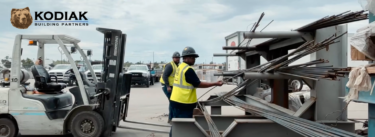We’ve been talking about transformation for a very long time in the lean community. And I believe that the term transformation has become a kind of sales pitch that appeals to peoples’ desire to make things better, but often fails to communicate the hard work and tenacity it takes to make it happen. The unspoken contract between the lean coaches and their clients goes something like this, “If we train our people in lean tools and thinking, and build a lean management system (visual boards, standard work, A3 problem solving, leader standard work, Hoshin Kanri, etc.), then we will transform our organization into a high-performing continuously improving lean enterprise.”
As a call to action that sure sounds great doesn’t it? But let’s get real for a moment, isn’t that what hundreds of companies have done only to realize localized improvements, little or no value stream-level benefits and a widespread inability to sustain the gains they have made?
Lean transformation, cultural transformation, organizational transformation, personal transformation, and so on. The appeal of transformation has become a false idol that never produces the outcomes we anticipate. In my 30 years of experience, what I’ve seen is, the more that people promise to deliver “transformation” the less likely it is that their assured result will be realized.
One of my favorite movies is The Life of Brian, a Monty Python religious satire where a young Jewish man who is born on the same day as, and next door to, Jesus Christ, and mistaken for the Messiah. In the movie, a mob is chasing Brian through the streets Jerusalem to be with who they think is the Messiah. In the chase one of Brian’s shoes falls off and a group of people pick it up and take it as a sign that this is what they must do to reach “salvation” (see the clip). The message reminds me of the misinformed promise of transformation. We see “the shoe” as the sign.
So where are all the examples of lasting transformations that represent a true shift in culture and performance? I have witnessed numerous organizations who have made real gains applying lean thinking and practices, and yet none would qualify as an enterprise-wide Transformation.
So why is this important? Because transformation (with a small “t”) is the heart of continuous improvement. This form of transformation is all about incremental change based on validated learning. Continuous improvement is never-ending kaizen-driven change and kaizen.But this is where most companies wane in their quest to transform.
How can we create a culture of continuous improvement (this is Transformation with a capital “T”) when we appear to understand transformation as a static destination? That paradigm does not work. You may say, “I know transformation is never-ending and not static, this is true!” But the question is not, “Is this true?”; the question is “Is it true for you?” Does it manifest in the way you live and think?
Transformation is not the goal
Transformation is a process not a destination, and our thinking about this is often a barrier to transformation – which we treat as a noun not a verb! Our thinking about transformation can create impenetrable barriers to real and lasting change. Companies often describe their transformation efforts in terms of an end-state: focusing on targeted results. They see transformation as a defined outcome—a specific target condition they wish to attain at a point in time – but lose their focus on the process to get there.
This paradigm prevents them from viewing transformation as a verb–a way of being–that they need to live every day. Transformation is not a static end state, but a never-ending voyage from where we are today towards an ever-evolving target state. For more on this idea, see my posts on applying mindfulness to be a more effective lean thinker.
A focus on results is a disabling killer because it creates pressure to reach a destination as soon as possible, when what is really needed is to foster awareness of where we are right now and the small steps required to incrementally improve towards a better place. Our primary focus needs to be on our purpose, how we deliver value to our customers, develop our people and relationships, and improve the work in front of us. If we keep peeking at the end-state we lose our focus and start reacting. We regress to “doing” rather than “being.” In transformation, there is no end state!
Reality Strikes
Today I attended a team stand-up at one of my clients, a group of lean coaches. We discussed executive coaching and sustainability. 90% of the conversation centered on whether the leaders being coached were ready to go it alone, and no longer needed external coaching and support. This was determined using a 5-point scale. I was amazed by the focus of the group: “what will it take to get this person from a 2 to a 4 as soon as possible so we can cut her loose?”
No process focus here, all results, fixed destinations and outcomes. I let out a sigh and said, “What is it about our current coaching process that needs to change to help this person grow from level 2 to level 4? Is the goal of getting this person to a level 4 or developing a human being to be an effective coach developing others?” Will we ever learn?
Presence
I was discussing this topic with a 20-something year old women recently who said, “it really comes down to awareness of the present moment and where your head is.” I think she nailed it: if we resist getting over identified with outcomes, we stay in the present moment and live within the process of improvement. In so doing, we avoid attachment to static outcomes, come back to the present moment, and stay here and awake. That presence positions us to stop running after “the shoe” and think more clearly as we apply the Plan-Shoe-Do-Check-Act cycle to the problem at hand.






